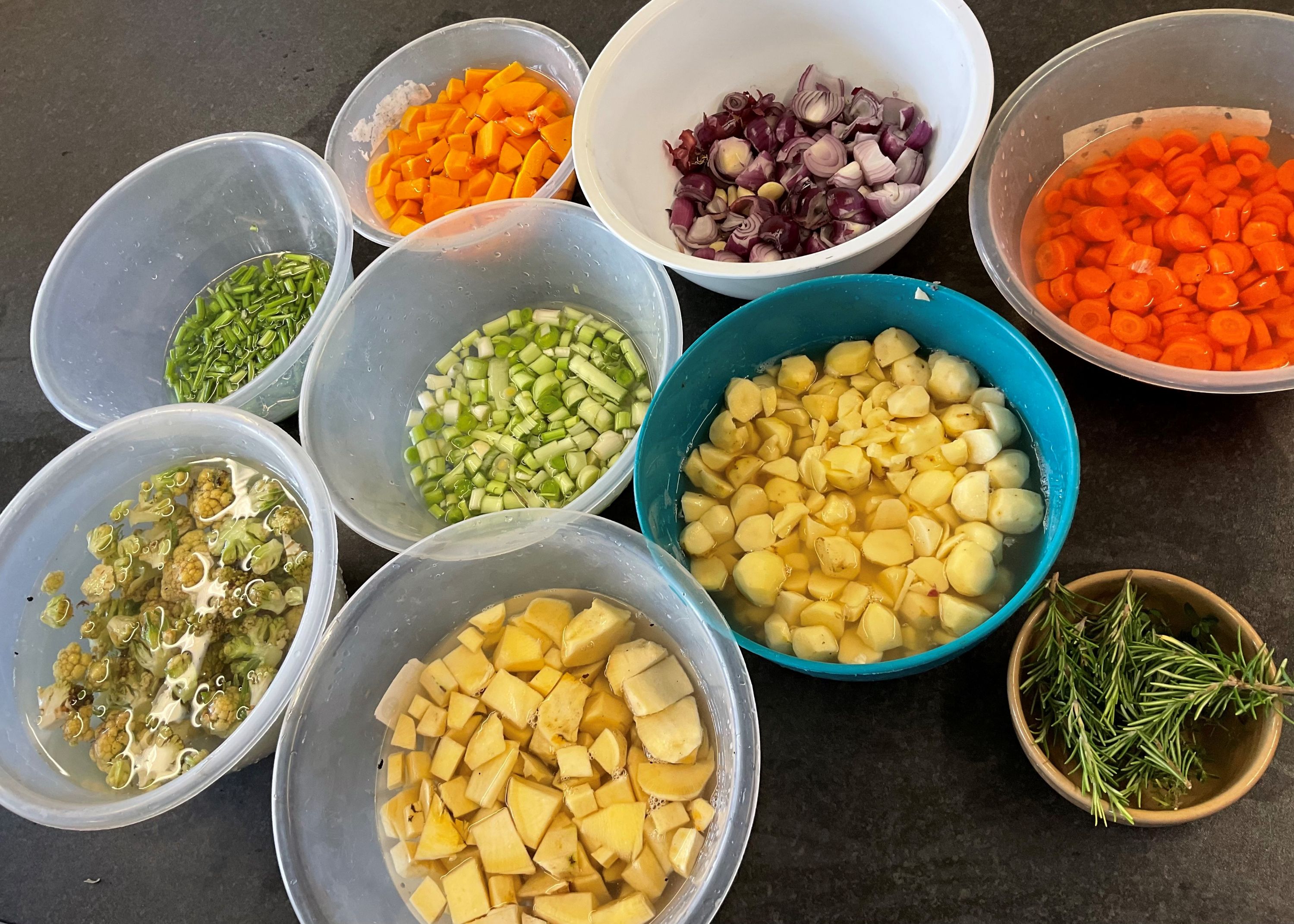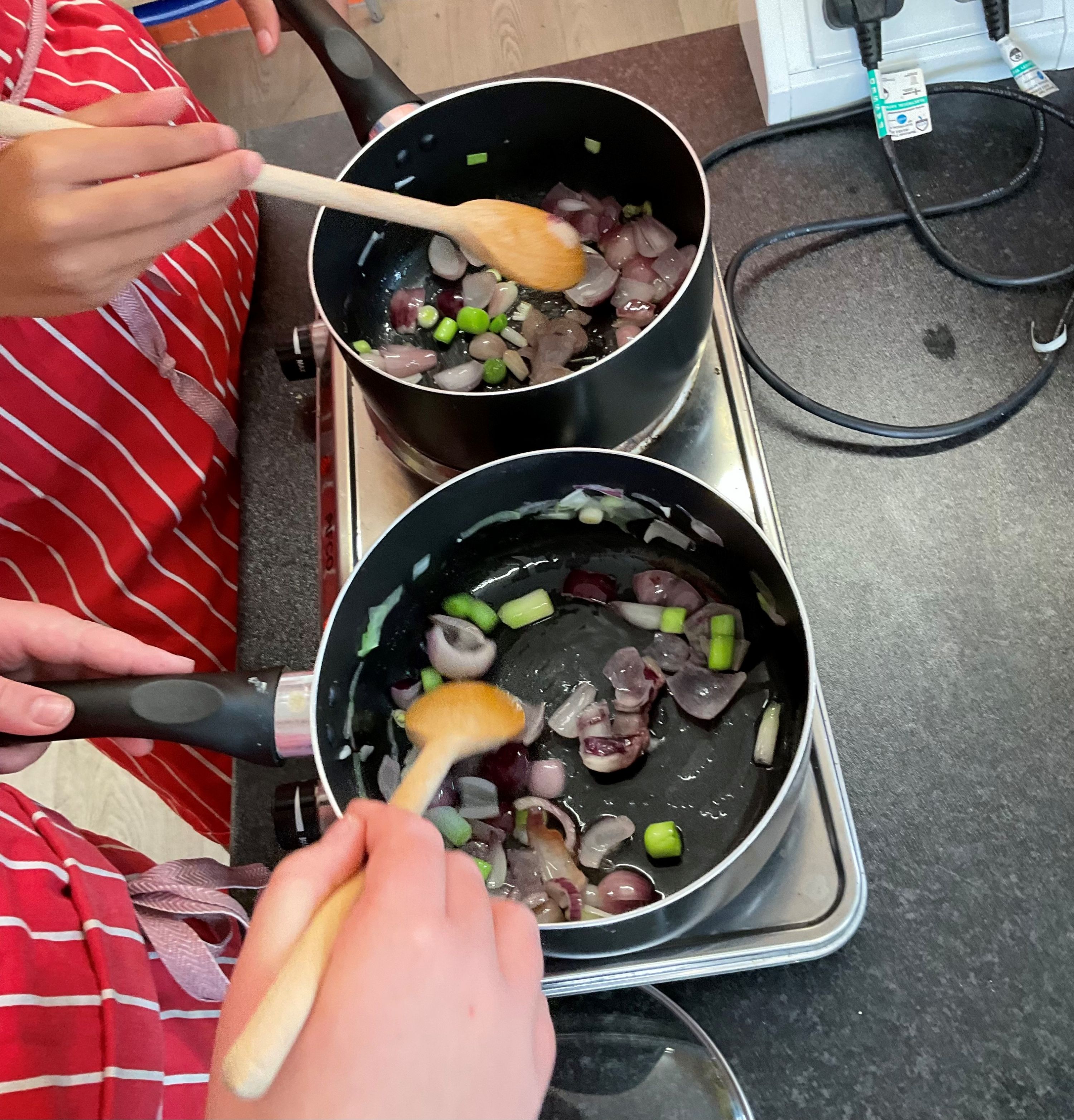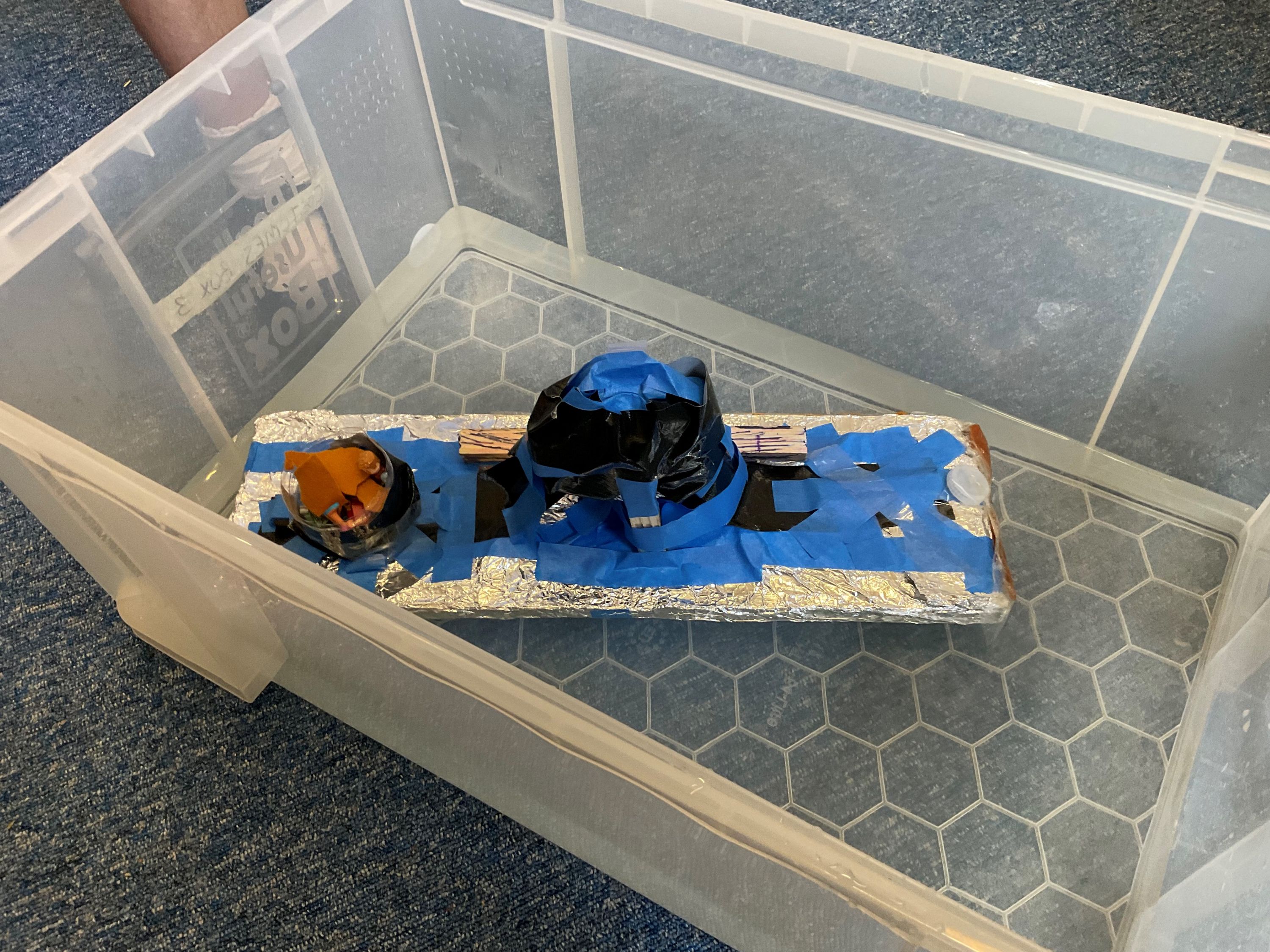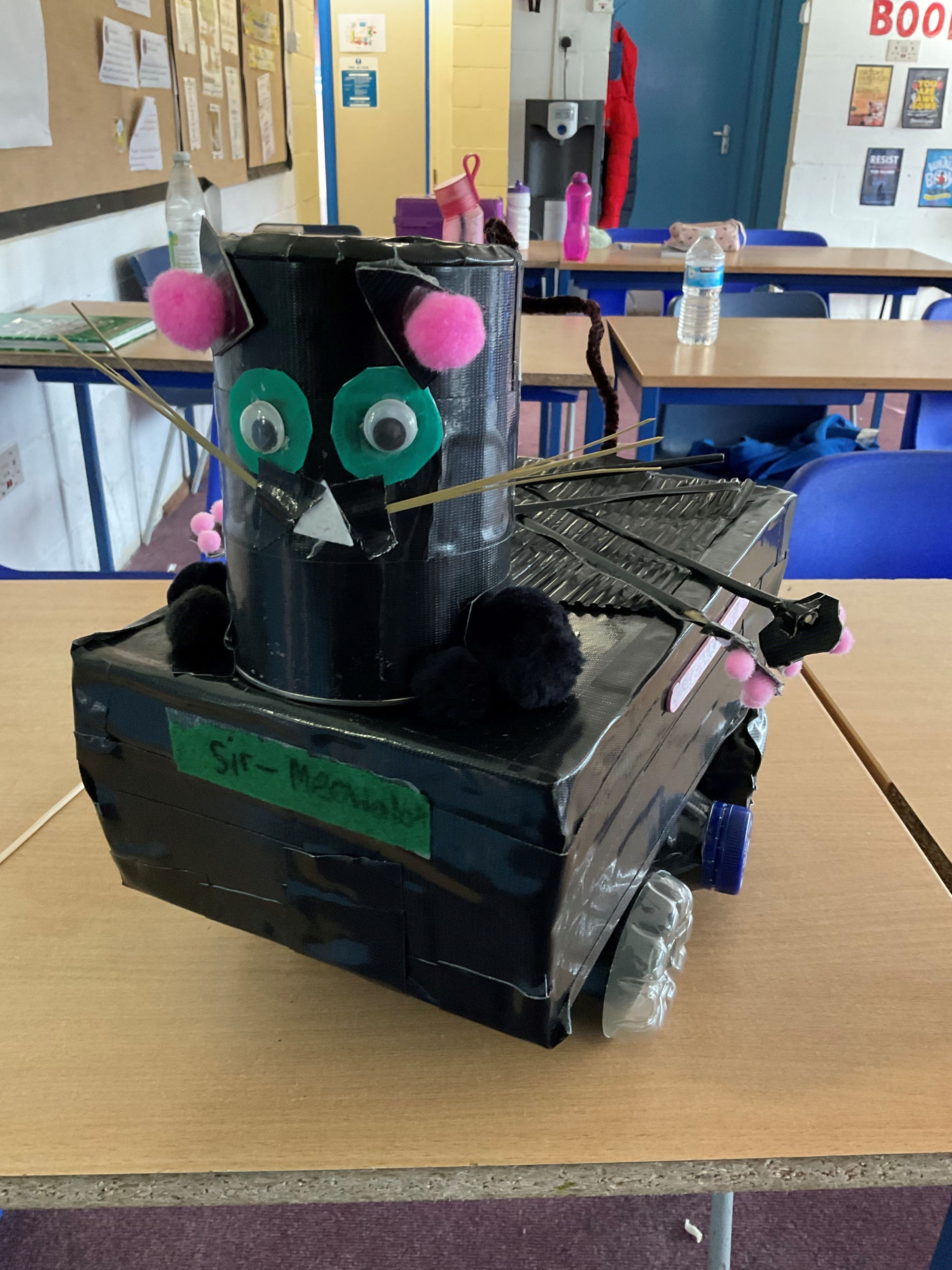Design Technology
Design Technology (DT) is a subject where we learn to design, create, experiment, test, improve and evaluate.
Leader: Amy Chappelow
Intent
At Frimley, teaching and learning in DT aims is to improve children’s engagement, creativity and enjoyment of DT and to provide them with opportunities to develop and extend their skills. All children will have the opportunity to express their individual ideas, thoughts and interests through a variety of mediums, equipment and resources. Children will become more confident artists and creators understanding that there is no ‘wrong’ result/outcome and develop resilience to improving their outcomes. They will learn more about different techniques and skills and have opportunities to practice these to become more confident inventors and creators of their own works of art and projects. Where possible, activities will include child-choice and be child-led to develop creativity and independence further.


Implementation
- We use a mastery-based curriculum that is progressive and broken into modules.
- Teachers deploy the Rosenshine principles to support the teaching and learning process: reviews of previous learning, new information is presented in small steps, high-level questioning, carefully considered models, guided practice, checks for pupil understanding, obtainment of a high success rate, scaffolds for difficult tasks, opportunities for independent practice and reviews of learning over extended periods.
- Units of work incorporate the areas outlined in the National curriculum: design, make, evaluate and technical knowledge.
- Each year group participates in a cooking and nutrition unit, building on previously learnt skills and knowledge.
- The curriculum is designed to be progressive, ensuring children have the opportunity to revisit and build on skills.
- A combination of whole and part-projects are used to ensure full coverage of the National curriculum objectives.
- Lessons will be exciting and creative where children can explore their ideas through different mediums, equipment and resources in a supportive style of small-step learning to build confidence and more positive outcomes.
- Where meaningful, units link to other subjects and to a range of relevant real-life contexts to enable the development of further transferable skills and cross-curricular learning.
- Teachers will take photographs of the children's work if the selected medium cannot be performed in art books - this enables the subject leader to monitor skills and knowledge progression.
- Teachers will assess work against a unit-specific success criteria to monitor the curriculum areas children are meeting and areas for development.
- Lessons are taught in blocks by the class or PPA teachers.
- Children will be influenced through enrichment, after school clubs and assemblies to provide further opportunity for creativity and child-led approaches.
- Links to careers in DT are made to show how children’s learning links to the wider world of work.
- As well as learning walks to observe teaching and learning and flipchart scrutinies, the Book Study approach is used to monitor the effectiveness of the DT curriculum, teaching and learning, to identify strengths and areas for development in provision and to garner pupil voice.


Impact
Children will:
- Leave Frimley equipped with a range of skills, knowledge and techniques to enable them to succeed in their secondary education.
- Show excitement, active engagement and enthusiasm in DT lessons.
- Explore and develop skills in using various techniques and a range of equipment.
- Have the ability to express their interests, ideas and thoughts with increasing confidence.
- Broaden and deepen their understanding of approaches in DT and enjoy the varied creative opportunities.
- Possess a clear understanding of the different stages of a DT project and some of the tasks and procedures needed to be successful at each stage.
- Have evidence of the skills they have learnt and of their progress in their sketch books (where relevant) and photos (where appropriate).
- Become better creative risk takers.
- Show resilience when things go wrong and develop a growth mindset to DT.
- Become more experimental and understand how to better their outcomes.
- Deploy a confident approach to creative learning.
- Be well equipped to plan and carry out creative learning and have developed their skills to achieve better outcomes.
- Be able to assess their own outcomes constructively and, with support, be able to identify areas for improvement and development.
- Understand how their learning in DT links to the wider world of work.
- Meet the end of key stage 2 expectations outlined in the National curriculum for DT.
